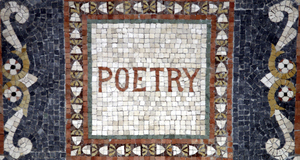Cultural Issues in the Higher Education Classroom
By
2012, Vol. 4 No. 07 | pg. 3/3 | « Strategies to Respond to Cultural Issues in the ClassroomWhile it may be somewhat more challenging to address cultural issues in a higher education context that includes U.S. students as well as NNESs, there are a number of practices an effective teacher can implement in order to raise awareness of hidden assumptions, expectations and biases. Educational practices that address cultural issues can benefit NNESs as well as U.S. students, who—in this increasingly multicultural world—must learn how to effectively interact with people of all cultures in and out of the classroom. While the U.S. students will unconsciously know the rules of the U.S. classroom, NNESs socialized into different cultures don’t play by the same set of rules. Following are some suggestions that address cultural issues in the higher education classroom, specifically the concept of class participation. Self-awareness is key to becoming culturally competent. As Damon says, “before we look at the context of the classroom, we must look at ourselves” (p.310). This means that effective, culturally competent teachers must make an effort to become aware of their own cultural biases and assumptions and encourage their students to do the same. Awareness and acknowledgment of difference rather than assumption of similarity can be a first step toward creating a supportive classroom community that “fosters feelings of membership and inclusion, promotes fuller development of a student’s positive self-image, and enhances self-concept” (Samovar et al, 2010, 351). Awareness of difference can also help teachers and learners avoid stereotyping, prejudice and ethnocentrism (Samovar et al, 2010). Teachers can help foster awareness of difference by inviting all students to share their expectations and experiences early on through activities, readings and assignments. In doing this, it would be important for the teacher to emphasize that U.S. classroom culture is not necessarily the best or only way of doing things, but that it is what most U.S. professors expect of their students. To help students unpack the hidden cultural rules, expectations and assumptions inherent in U.S. classroom culture, the teacher could incorporate cultural tasks, games, role-plays, critical incidents and/or mini debates. For example, at the beginning of the semester, she could invite students to do an informal discourse analysis of their course syllabus, to uncover the numerous hidden expectations and assumptions it holds (Demo, 2001). Rather than assuming that all students share the same expectations of what is meant by class participation, the teacher could break down this concept into its component parts. For example, class participation is comprised of: Q & A, discussion, turn-taking, back-channeling, clarification requests and knowledge of formulaic English expressions that must be explicitly taught to many international students. The teacher could also ask students to participate in an informal debate comparing teacher-centered approaches to learning with learner-centered approaches (Smithee, Greenblatt, Eland, 2004). In addition, the teacher could create a task in which international students work in small groups with U.S. students to create a user-friendly culturally explicit syllabus that includes all of the hidden rules, steps and assumptions.Activities that might seem obvious to the teacher (and U.S. students) must be broken down into discrete actions and steps. For example, because back-channeling behavior and eye contact are culturally determined, international students must explicitly be taught what it is that U.S. listeners do, so that they can interpret non-verbal communication during class discussions. As aforementioned, turn-taking is another culturally influenced behavior that needs to be made explicit so that international students can effectively take part in class discussions. Role-plays and/or simulations incorporating varying cultural behaviors might be effective ways of teaching and practicing these learned behaviors. Teachers should be mindful that their international students might be experiencing culture shock (Brown, L. & Holloway, I. 2008). To counteract the disorienting effects of culture shock, teachers should help their international students create support networks. These could include: listing university support services in the syllabus along with campus maps; pairing international students with a U.S. student buddy; encouraging students to take part in free cultural programs sponsored by the university and visiting the university academic support center. Another way teachers can address cultural issues is through the content they teach and the homework they assign. Samovar et al suggest providing “many opportunities to discuss global topics of interest…[and encouraging] any diverse perspectives” (2010, p. 354). Culturally competent teachers can “invite students themselves to undertake a critical examination of the content” (Rod Ellis, 2003, p.332). Teachers could create rubrics for every assignment requiring them to critically analyze texts using a cultural framework that examines the role of class, gender, worldview, nationality, language and religion. The culturally competent teacher should practice corrective feedback approaches that take linguistic and cultural factors into consideration in order to lower affective filters. In writing and speaking the teacher should focus on global errors that impede comprehension rather than correcting every little small grammatical mistake. In addition, the teacher should refrain from correcting NNESs pronunciation in front of the other students to prevent the NNES from “losing face” and suffering feelings of shame and humiliation. These sorts of issues could be addressed one-on-one in student-teacher conferences, emails or online journals. In small group activities the teacher should allow NNESs to occasionally use their L2 to help their peers fill in gaps in background knowledge and clarify directions as well as to acknowledge that language plays other important roles in addition to information transfer, i.e. reinforcing social and kinship ties. ReferencesBartlett, T. & Fischer, K. (2011, November 3). The China Conundrum. The New York Times, pp. 1-10. Brown, L. & Holloway, I. (2008). The initial stage of the international sojourn: excitement or culture shock? British Journal of Guidance & Counseling, 36(1), 33-49. Celce-Murcia, M. (2001). Teaching English as a Second or Foreign Language. United States: Heinle & Heinle. Damen, L. (1986). Culture Learning: The Fifth Dimension in the Language Classroom. Reading, Massachusetts: Addison-Wesley Publishing Company. DeCapua, A. & Wintergerst, A. (2004). Crossing Cultures in the Language Classroom. Ann Arbor: The University of Michigan Press. Demo, D. (2001). Discourse Analysis for Language Teachers. Washington, DC: Center for Applied Linguistics. Ellis, R. (2003). Task-based Language Learning and Teaching. Oxford: Oxford Applied Linguistics. Feak, Reinhart & Rohlck (2009). Academic Interactions: Communicating on Campus. Ann Arbor: The University of Michigan Press. Gudykunst, W. & Lee, C. (2003). Cross-Cultural and Intercultural Communication. Thousand Oaks: Sage Publications. Institute for Educational Leadership (2005). Preparing and Supporting Diverse, Culturally Competent Leaders: Practice and Policy Considerations. Washington, DC: IEL. Leki, I. (1992). Understanding ESL Writers: A Guide for Teachers. Portsmouth, NH: Boynton/Cook Publishers. Samovar, L, Porter, R. & McDaniel, E. (2006). Intercultural Communication: A Reader. Belmont, CA: Thomas Wadsworth. Samovar, L, Porter, R. & McDaniel, E. (2010). Communication Between Cultures. Boston, MA: Wadsworth Cengage Learning. Scollon, R. & Scollon, S., (2001). Intercultural Communication, A Discourse Approach. Malden, MA: Blackwell Publishing. Smithee, M., Greenblatt, S. & Eland, A. (2004). U.S. Classroom Culture. NAFSA: Association of International Educators. New York: NAFSA.
Appendix A I used Scollon & Scollon’s “Grammar of Context” framework to analyze the scene (p.33). I. Scene: Mid-sized U.S. University; required first-year writing seminar/workshop class a. Setting: modern classroom; fixed hour once a week; desks configured in circle shape b. Purpose: knowledge acquisition; academic English writing c. Topic: course theme and homework assignments revolve around “Resistance” d. Genre(s): discussion, Q&A, class discussion, narrative, essay, and oral presentations II. Key: serious, academic, informal and formal (sometimes lighthearted and relaxed) III. Participants a. first-year university students (NESs & NNESs); international students are all Asian. IV. Message form a. speaking b. writing c. silence d. other media (digital projector, slides) V. Sequence a. Set agenda (first hour of class is class discussion followed by “writing workshop”) VI. Co-occurrence patterns: informal personal conversation for the first 5 minutes of class VII. Manifestation a. Tacit: expectations of class participation: turn-taking, holding the floor, seating, expressing opinions, expressing disagreement, back-chanelling, Q/A, debating norms b. Explicit: syllabus lists required reading along with various forms of writing genres they will “workshop” each week. Class participation is listed but not explained. Appendix B MICASE CORPUS Appendix C April 2, 2012 - Interview with R. Chang, 24-year-old Chinese Graduate Student Rui is a Chinese attorney who spent her senior year at a U.S. Midwestern University studying business law. She is currently getting a Master’s at AU’s law school and hopes to work as a law professor in China. She visits AU’s Writing Lab twice a week. Q: What was your classroom like in China? Were you allowed to ask questions? A: “When I was student in China, I really liked asking questions in class but if you ask too many questions classmates think you are just showing off. So I had a really hard time. Some professors think asking questions disturbs the other students or makes the teacher forget. Students are reluctant to ask questions. They don’t want to stand out. If someone speaks up in class the other students will really hate him and if you keep doing this you will have a bad relationship with classmates. So students are very quiet in class. Very silent. It’s a very vicious cycle. Students hold questions until after class.” Q: Can you please talk about what the Gao Kao exam meant to you and the Chinese educational system in general. A: “Only way for poor Chinese students to improve their destiny is to pass the Gao Kao. Nobody really cares if you attend class or not. If you just memorize textbook you get 100%. Professors teach the questions on the gao kao. Most students don’t prepare for class. Class conversations do not have any quality. Chinese education system has lot of problems.” Appendix D Interview with P. Rattanakosin, female Thai undergraduate student at AU Q: Did AU’s expectations of “classroom participation” match the expectations of classrooms in your home country? A: Of course, schools in Thailand do not encourage class participation. Asking questions in class can send a negative signal to the teacher that the student who asks questions cannot comprehend the lecture well. Q: Did your AU professors explicitly describe their expectations regarding classroom participation? A. Yes and no. In some classes, professor did not go over the syllabus. They expect us to read the syllabus in our own time and went straight into the lecture. Q: What do you think about students leading university classes? A. I don't know about this because we don’t do this in Thailand, but I suspect that there will be a significant amount of active class participation. Suggested Reading from Inquiries Journal
Inquiries Journal provides undergraduate and graduate students around the world a platform for the wide dissemination of academic work over a range of core disciplines. Representing the work of students from hundreds of institutions around the globe, Inquiries Journal's large database of academic articles is completely free. Learn more | Blog | Submit Latest in Education |


















